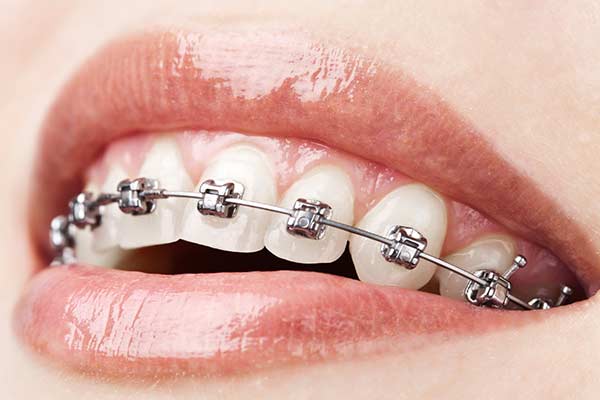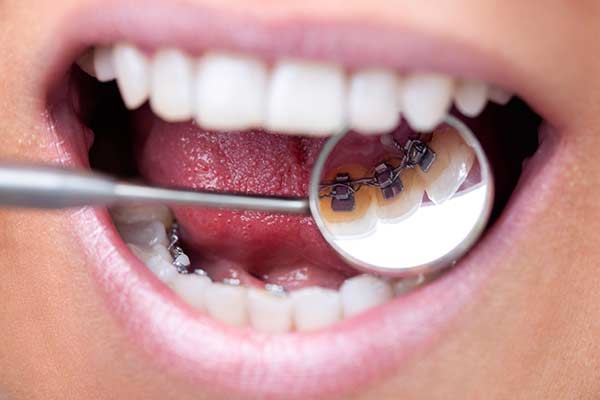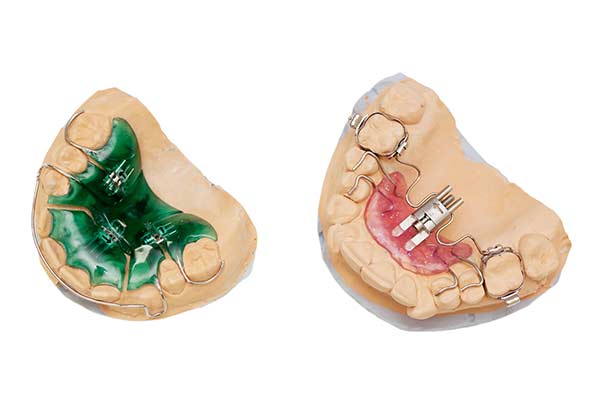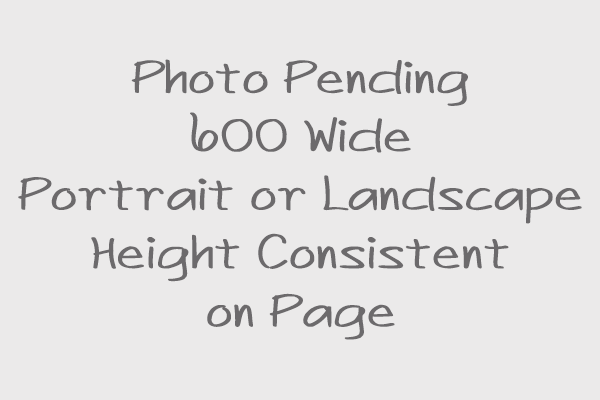General Dental Services

Preventive and Diagnostic
Comprehensive Evaluation / Oral Examination
An oral examination is a visual inspection of the mouth, head, and neck, performed to detect abnormalities. Radiographs allow for a more complete examination, helping the doctor to detect cavities, problems in existing dental restorations, gum and bone recession, or other abnormal conditions within the mouth, head, and neck area.
Cleaning
A dental cleaning, also known as an oral prophylaxis, is the removal of dental plaque and tartar (calculus) from the teeth. Specialized instruments are used to gently remove these deposits without harming the teeth. First, an ultrasonic device that emits vibrations and is cooled by water is used to loosen larger pieces of tartar. Next, hand tools are used to manually remove smaller deposits and smooth the tooth surfaces. Once all the tooth surfaces have been cleaned of tartar and plaque, the teeth are polished.
Custom Mouth Guards
Many sports require athletes to use a mouth guard to protect their teeth while practicing and playing. Frequently used in contact sports, the mouth guard covers the gums and teeth to provide protection for lips, gums, teeth, and arches. A properly fitted mouth guard can reduce the severity of dental injuries.
Pre-formed, ready-to-wear mouth guards can be purchased inexpensively at many sporting stores, but they do not always fit well. They can be uncomfortable and can interfere with talking and even breathing.
Sporting goods stores also offer semi-custom mouth guards in which the plastic is heated and then the athlete bites on it while still warm to provide some level of custom fit.
Our office can make a custom mouth guard by taking an impression of your teeth and then creating a device fitted to your mouth for the highest level of both comfort and protection. A custom fitted mouthguard can be particularly important for athletes who wear braces.
Be sure to bring your mouthguard to your dental appointments, so we can be sure it still fits you well.
Restorative Dentistry
Composite Fillings
Composite fillings use tooth-colored material to restore teeth with cavities and maintain a natural appearance. Once the decay is removed, the tooth is filled with a composite material which is then cured using a specialized light to harden the material. Composite fillings can be done in one visit.
Inlays and Onlays
An inlay or onlay is a partial crown restoration that can be placed when there is not sufficient tooth structure to support a filling but enough tooth structure left that a full crown is not needed. Inlays/onlays are made of porcelain or gold, and they aesthetically and functionally replace the missing tooth structure.
Crowns
A crown is a dental restoration that completely covers the outside of a tooth that is cracked, broken, worn down, or severely decayed. Dental crowns are usually completed in two visits. During the first visit, the tooth is prepared (shaved down) and an impression is taken. A temporary crown is placed while the permanent crown is fabricated. During the second visit, the permanent crown is carefully fitted and then cemented into place.
Bridges
A bridge can replace missing teeth without the use of a denture or dental implant. A bridge is composed of two crowns and a replacement tooth or teeth. Crowns are typically placed on the teeth on either side of the space, with the fabricated tooth or teeth attached in between.
For multiple missing teeth, an implant may be used to anchor the bridge. Learn More About Implant Supported Bridges
Implant Restorations
Dental implants are composed of three pieces: a small screw made of a biocompatible metal called titanium, an abutment which connects the screw and the final restoration, and the final restoration. The screw, which is placed in the jawbone, acts as a replacement for the tooth root, providing a strong foundation for fixed or removable replacement teeth. The screw begins to fuse with the bone over the course of a few months. After the fusing process, known as osseointegration, the abutment is inserted into the screw to allow for the permanent attachment of the restoration.
Dentures
A denture is a replacement for multiple missing teeth within the same (upper or lower) arch. A denture differs from a crown or bridge in that it does not rely on an existing tooth structure, and it completely replaces the missing teeth.
There are several different types of dentures:
- Full or Partial
- Removable or Fixed
- Traditional or Implant-Supported
Learn More About Restorative Dentistry
Cosmetic Dentistry
Teeth Whitening
Teeth will naturally lose their brightness over time. Drinking coffee or tea, or using tobacco, as well as certain childhood medications can cause teeth to discolor or darken even faster than normal.
Whitening, also known as bleaching, is the procedure used to brighten teeth. There are two different ways to achieve a desired whiter smile: In-Office Bleaching and At-Home Bleaching.
Invisalign®
Invisalign® takes a modern approach to straightening teeth, using a custom-made series of aligners. These aligner trays are made of smooth, comfortable, and virtually invisible plastic that you wear over your teeth. Wearing the aligners will gradually and gently shift your teeth into place, based on the exact tooth movements our office plans out for you. There are no metal brackets to attach and no wires to tighten. You just switch to a new set of aligners approximately every two weeks, until your treatment is complete. You’ll achieve a great smile with little interference in your daily life. The best part about the whole process is that most people won’t even know that you’re straightening your teeth.
Veneers
Porcelain veneers are thin pieces of porcelain used to recreate the natural appearance of teeth. To place a veneer, a thin layer of the original tooth enamel must be removed. Afterward, an adhesive layer is placed between the prepared tooth and the veneer. The adhesive is then hardened with the use of a specialized curing light.
Cosmetic Bonding
Cosmetic bonding is the process of filling or restoring teeth with a tooth-colored material in order to improve a tooth’s appearance. In order to bond a tooth, composite material is added to the tooth structure to adjust the size, shape, or color of the existing tooth.
Microabrasion
This technique can minimize or eliminate stains, yellowing or spots by removing a very thin layer of the tooth’s enamel.
Learn More About Cosmetic Dentistry
Additional Services
Scaling and Root Planing
Scaling and root planing is a non-surgical procedure used to treat gum disease. During the scaling process, specialized dental instruments are used to remove dental plaque and calculus from beneath the gums. Planing is the procedure used to smooth the tooth roots after the scaling process. Root planing helps the gums heal and reattach themselves to a cleaner and smoother root surface.
Root Canal Treatment
Root canals are most often necessary when decay has reached the nerve of the tooth or the tooth has become infected. When root canal therapy is performed, infected or inflamed pulp is removed from the tooth chamber. The inside of the tooth is then cleaned and disinfected before being filled and sealed to limit the possibility of future infection. Soon after the root canal is performed, the tooth is restored with a dental crown or filling to protect the tooth and restore normal tooth function.
Extractions
A tooth that can not be saved with restorative materials may need to be removed. Before removal of the tooth, the area will be numbed with anesthesia. The tooth is loosened from the jawbone and surrounding ligaments and tissues with a gentle rocking motion. Once it is loose, it is gently removed. Stitches may be necessary after the removal of a tooth.
TMJ Disorders
The temporomandibular joint (TMJ) is similar to a sliding hinge that connects your jawbone to your skull. TMJ disorders can cause pain in the jaw joint and in the muscles that control jaw movement.
To treat TMJ disorders, first the cause has to be identified. Improper alignment due to genetics or injury, arthritis affecting the cartilage in the joint, malocclusion, and trauma can all cause TMJ disorders.
Obstructive Sleep Apnea Treatment/Appliance
Sleep apnea is a disorder in which one experiences one or more pauses in breathing or shallow breaths during sleep. For mild sleep apnea, a custom fitted mouth piece or some lifestyle changes (weight loss, smoking cessation, clearing nasal passages) may be helpful. Our office can create a custom-fitted oral appliance for patients to wear when they are sleeping that can aid patients during sleep by positioning the lower jaw and tongue in a way that minimizes airway obstruction.
Snoring Therapy
Snoring can be a problem for both children and adults. Although it may be perceived as a small nuisance or inconvenience, disrupted sleep is a problem that may need to be addressed. The use of a snore guard during sleep is often a simple and effective solution.
Nitrous Oxide
Nitrous oxide, sometimes referred to as “laughing gas,” is an effective and safe sedation agent that is inhaled through a mask that fits over your nose to help you relax. Mixed with oxygen, Nitrous oxide allows you to breathe normally through your nose and begins to take effect within just a few minutes. You may feel light-headed or experience a tingling in your arms and legs. Some patients comment that their legs and arms feel heavy. Ultimately, you should feel comfortable and calm. The effects of nitrous oxide wear off quickly after the small mask is removed. Ask us about whether nitrous oxide would be a good option for you.
Specialized Techniques
CAD/CAM Restorations
CAD/CAM is an acronym that stands for computer-aided design/computer-aided manufacturing. CAD/CAM technology is used to help the dental team fabricate precise shapes and sizes for dental restorations including inlays, onlays, crowns, and bridges.
Laser Dentistry
Lasers in dentistry allow for many dental procedures to be performed with no noise, very little pain, and fewer appointments. All lasers work by delivering energy in the form of light.
When used for surgical and dental procedures, the laser acts as a cutting instrument. When used for “curing” a filling, the laser helps to strengthen the bond between the filling and the tooth. When used in teeth-whitening procedures, the laser acts as a heat source and enhances the effect of tooth-bleaching agents.
Biomimetic Dentistry
Biomimetic dentistry is defined as the reconstruction of teeth to emulate their natural biomechanical and esthetic form and function. Simply put, biomimetic dentistry means to copy what is life-like. With biomimetic dentistry, only the damaged and decayed part of the tooth is removed and the final restoration is bonded to the remaining healthy natural tooth structure. Biomimetic restorations include stress-reduced direct composite restorations and porcelain/composite inlays and onlays that restore the biomechanics of broken and damaged teeth. Traditional dental treatments do not follow the biomimetic approach.
When restoring damaged, broken, and decayed teeth, the goal is to return the tooth to its original strength, function, and esthetic. Biomimetic dentistry accomplishes all of this in a conservative, strong, and attractive approach.
Orthodontic Services
We specialize in orthodontics. Braces are used to assist in aligning and straitening teeth in order to not only improve appearance, but improve a person’s bite. Having braces isn’t just about improving your smile, but it’s also about improving your overall dental health. Orthodontics may be used to correct malocclusion, overbite, underbites, cross bites, deep bites, crooked teeth and other flaws of the teeth and jaws. Braces may be used in conjunction with other orthodontic appliances to help with making corrections to a person’s bite.
Dental technology has improved over the years to include new options to help correct the above issues, and there are a number of techniques and products available that were not available just a few short years ago. The patient experience has improved and today’s options are less conspicuous than the full braces that were common in the past.
Traditional metal braces are still the most popular types of braces as they produce high quality results. Clear Ceramic braces are popular with adults and teenagers who want the results of braces without the look of metal. Your visit will begin with a consultation with the doctor to go over the best alternatives for your orthodontic care. The doctor will address any questions you may have regarding your treatment and will provide a plan for orthodontic therapy.
Metal Braces

Metal braces made from stainless steel brackets and wires remain the most popular choice for braces and are very effective.
Clear Brackets

Virtually invisible, there are several advantages clear brackets have over traditional braces and aligners. Clear braces combine tieless braces with high technology archwires that are clinically proven to move teeth fast and comfortably with truly spectacular smile and facial results. Available from skilled orthodontists, clear braces combine the best of traditional clear braces and invisible aligners to deliver a discrete treatment experience with results that go beyond straight teeth.
Self-Ligating Braces

Self-ligating brackets have some advantages over traditional metal braces. The primary difference is that they do not use elastics or metal ties to connect the archwire to the brackets. There are several potential benefits to choosing self-ligating brackets if it is determined that they are a good option for your treatment.
Aesthetics – Self-ligating brackets may appear smaller than traditional brackets.
Cleaning – The absence of elastics and ties can it easier for patients with self-ligating braces to keep their teeth and braces clean, although special care and attention to daily cleaning is important with any type of orthodontic treatment.
Appointment Time – Adjustment appointments are often shorter with this efficient system due to the specialized brackets that hold the archwire within the bracket.
Treatment Time – Overall treatment time with self-ligating orthodontic brackets is often shorter than that of traditional metal braces.
Lingual Braces

Lingual braces are a great solution for professionals or for anyone who prefers not to have the braces visible. Lingual braces are placed behind your teeth so that you get the same effective tooth alignment to create a beautiful smile, without everyone realizing you have braces.
Invisalign®
Invisalign® takes a modern approach to straightening teeth, using a custom-made series of aligners created for you and only you. These aligner trays are made of smooth, comfortable and virtually invisible plastic that you wear over your teeth. Wearing the aligners will gradually and gently shift your teeth into place, based on the exact movements your dentist or orthodontist plans out for you. There are no metal brackets to attach and no wires to tighten. You just pop in a new set of aligners approximately every two weeks, until your treatment is complete. You’ll achieve a great smile with little interference in your daily life. The best part about the whole process is that most people won’t even know you’re straightening your teeth.
Damon Braces®
Virtually invisible, Damon Clear has clear advantages over traditional braces and aligners. Damon Clear is part of the innovative Damon System, which combines tieless braces with high technology archwires that are clinically proven to move teeth fast and comfortably with truly spectacular smile and facial results.
Available from skilled orthodontists, Damon Clear combines the best of traditional clear braces and invisible aligners to deliver a discrete treatment experience with results that go beyond straight teeth.
Acceledent®
AcceleDent uses SoftPulse Technology ™ to help your current orthodontic treatment work faster. It does this by generating small vibrations called micropulses to gently accelerate the movement of your teeth as they are guided by your orthodontics. The micro pulses can also help to make your orthodontic experience more comfortable.
- Proven – Demonstrated safe and effective in US clinical trials
- Safe – Cleared by the US Food and Drug Administration and available only prescription from your orthodontist
- Simple – Requires on 20 minutes a day of hands-free use at home, so you can text, read, watch TV or listen to music
Palatal Expander Device (PED)

Both removeable and fixed PEDs can be used to address crowding and other issues by expanding the upper jaw to make more room to accommodate tooth and/or jaw alignment.
Additional Services
Retainers
Once treatment is complete, a retainer is worn for a period of time, usually just at night. The retainer helps maintain the new smile and also allows for small adjustments, if needed, once the braces have been removed.
Surgical Orthodontics
Surgical orthodontics involves orthognathic surgery and is done to correct misalignments or other abnormalities in the upper jaw and lower jaws. For this type of orthodontics, we work closely with an oral surgeon to create a treatment plan. This surgery and orthodontic treatment solution can help improve speech, breathing, chewing and appearance.
Orthognathic surgery can involve surgical procedures such as an osteotomy (bone cutting), bone grafts, or distraction osteogenesis (stretching of the bone) and orthodontic (braces) care. Orthognathic correction is conducted in stages, and the course of treatment can last a few months up to one year or more.
In order to perform the procedure successfully, the jawbones will be repositioned in accordance with one’s specific needs. Inconspicuous incisions are usually made inside, and if needed, outside the mouth to allow for surgical plates, screws, wires and rubber bands to be used to hold your jaws in their new positions.
Craniofacial Orthodontics
This field of orthodontics is highly specialized and requires the involvement of an oral surgeon as well as our team. Craniofacial Orthodontics help treat a congenital birth defect know as cleft lip or cleft palate.
Cleft lip is an opening/split in the upper lip and cleft palate is an opening/split in the roof of the mouth (palate). Cleft lip and cleft palate result when these developing facial structures in an unborn baby do not close completely.
A series of surgeries can restore normal function and achieve a more normal appearance with minimal scarring.
A cleft lip is usually repaired between the ages of 3 to 6 months. Some children require a lip adhesion or a device such as a molding plate to bring the parts closer together before the full lip repair. A child with a cleft lip that is repaired will have a scar on the lip under the nose.
A cleft palate is usually repaired between 9 and 12 months of age. To repair the palate, the soft palate muscles from each side are connected to each other and the normal barrier between the mouth and nose is created.
Additional surgeries are needed to improve the appearance of the lip and nose, close the opening between the mouth and nose, help breathing, and stabilize and realign the jaw. Once the permanent teeth grow in, braces are often needed to straighten the teeth.
Clear Braces
Virtually invisible, there are several advantages clear braces have over traditional braces and aligners. Clear braces combine tieless braces with high technology archwires that are clinically proven to move teeth fast and comfortably with truly spectacular smile and facial results.
Available from skilled orthodontists, clear braces combine the best of traditional clear braces and invisible aligners to deliver a discrete treatment experience with results that go beyond straight teeth.
Endodontic Services
Endodontics (Root Canal Therapy)

Our primary goal is to save your natural teeth whenever possible. Our practice specializes in Endodontics, commonly referred to as root canal therapy. Endodontics is the treatment of the pulp and surrounding tissues of a tooth. When root canal therapy is performed the pulp chamber of the tooth is removed and then filled with a suitable filling material. Root canals are most often necessary when decay has reached the nerve of the tooth or the tooth has become infected. People have anywhere from 1 to 4 canals in a tooth. Extra canals may branch out and are called “accessory canals.” The number of canals and anatomy of a tooth can vary. The word “endo” comes from the Greek language and means “inside” or within. Endodontists work with the “inside” of a tooth.
Endodontic Retreatment

Occasionally a tooth that was treated months or years ago may develop new problems. In some cases a tooth that has received endodontic treatment fails to heal or continues to have pain. You may have another chance to save the tooth with a second endodontic procedure.
Endodontic or Apical Surgery

In some cases it may be necessary to remove the infected root tips or apex and the nearby tissue. This is known as a apical surgery or an apicoectomy. The area around the apex of the tooth that is infected is cleaned, and the tip of the root is resected and sealed. Sutures are placed and an ice pack is applied. Medication is prescribed to help alleviate any pain or discomfort and it is best to plan to rest for the remainder of the day. Most patients will have some minor swelling and occasional bruising with some numbness.
Cracked Teeth

Symptoms of a cracked tooth are varied and may include pain when chewing, temperature sensitivity or pressure sensitivity or a combination of these. Because the pain often comes and goes, it can be very difficult to recognize what is causing the problem. It can sometimes even be difficult to identify exactly which tooth is causing the discomfort.
Even small movement of the cracked tooth pieces during chewing can cause irritation to the tooth’s pulp, which causes pain. Similarly, when the bite is released, the crack can close quickly, causing sharp pain. Over time, the tooth pulp will become damaged. As this happens, the tooth will hurt more consistently. Cracks can sometimes lead to infections in the pulp tissue and spread to the surrounding gum and bone.
Dental Trauma

Traumatic injuries can result in the need for dental treatment. Fractured or cracked teeth, a displaced tooth, or even a tooth that has been knocked out (avulsed) are common results of dental trauma. Each of these conditions requires specific treatment, dictated by the effect of the injury on the tooth, whether or not the tooth is deciduous (a baby tooth) or permanent (adult), and the time between the injury and treatment, among other considerations. Any dental trauma requires prompt medical evaluation and treatment. Treatment may include a splint, medication, a root canal or other procedures. Once treated, your tooth will be monitored to ensure it is healing as expected and so that any injuries or infections can be quickly resolved.
Pulpotomy

The blood vessels, nerves, and tissue that keep a tooth healthy and alive are located in the tooth’s pulp, which is protected by the outer enamel and tooth structure. Sometimes the pulp can become infected. The infected pulp can be removed with a pulpotomy. A medicated dressing is then placed in the tooth chamber to prevent further infection and to promote the healing of the remaining pulp. The chamber is then sealed. Because this procedure is often performed on deciduous (baby) teeth, it is sometimes referred to as a baby root canal.
Pedodontic Services
Preventive and Diagnostic

Comprehensive Oral Evaluation
An oral evaluation is recommended every six (6) months to prevent cavities and other dental problems. During an oral evaluation, a thorough examination of the mouth, head, and neck is performed to detect abnormalities.
Dental Cleanings (Prophylaxis)
Regular cleanings help keep gums healthy and teeth cavity-free. A dental cleaning includes removal of tartar and plaque and polishing of the teeth to remove stains and prevent further buildup of plaque.
Fluoride Treatment
Fluoride is a natural substance that helps strengthen teeth and prevent decay. Fluoride treatments are administered at this office as an important component of pediatric dental treatment. The fluoride is applied to the teeth in a gel, foam, or varnish form.
Digital Radiographs
Dental X-rays are a valuable diagnostic tool used to identify decay, extra teeth, bone defects, tumors, cysts and check the progress of previous procedures. Advances in technology now allow for digital X-rays, which reduce radiation exposure more than 50 percent, and produce instant, high-quality images that can be viewed immediately by the dentist and the patient.
Oral Hygiene Instructions
During a regular check-up, oral hygiene instructions are given to both patient and parent. Good home care can reduce the risk of plaque and tartar build-up which can lead to cavities. Instructions include proper techniques for brushing, flossing, and using mouth rinses.
Dental Sealants
Dental sealants are made of a safe resin material which is applied to the surfaces of teeth (commonly permanent molars) to prevent cavities. The sealant material fills in the crevices of a tooth and “seals” off the tooth from cavity-causing agents like food and plaque. The teeth are prepared for the sealant application and the sealant is painted directly onto the chewing surface of each tooth and then hardens. Sealants are applied in one visit.
Restorative
Composite (White) Fillings
Tooth-colored fillings are the most lifelike material used to fill cavities. Composite fillings can be done in one visit. Once the decay is removed, the tooth is filled with this composite material that hardens immediately after placement.
Pulp Treatment (Pulptomy/Pulpectomy/Baby Root Canal)
Root canals involve treating decay that is inside of the tooth. If the inside of the tooth, known as the dental pulp, is damaged it will gradually decay if left within the tooth. The pulpotomy involves removing the pulp, cleaning out the root canals, and packing the canals with material that will help restore the tooth until it is time for it to exfoliate (or fall out on its own naturally).
Dental Crowns
A crown is a dental restoration that completely covers the outside of a severely decayed tooth. Dental crowns can be completed in two visits. During the first visit, the tooth is prepared (shaved down) and an impression is taken. A temporary crown is placed while the permanent crown is being made. During the second visit, the permanent crown is carefully fitted and then cemented into place for a permanent restoration.
Extractions
A tooth that can not be saved with restorative materials may need to be removed. Before removing the tooth, the area will be numbed with local anesthesia. The tooth is then loosened using a special dental instrument known as an elevator. After the tooth is loosened from the socket, it is removed.
Interceptive Orthodontics
Habit Appliance
A tooth that can not be saved with restorative materials may need to be removed. Before removing the tooth, the area will be numbed with local anesthesia. The tooth is then loosened using a special dental instrument known as an elevator. After the tooth is loosened from the socket, it is removed.
Space Maintenance
Space maintainers are used to keep teeth from drifting into an empty tooth space due to early loss of primary (baby) teeth. Baby teeth act as a guide for the eruption of the permanent teeth. A space maintainer is made of stainless steel and/or plastic. It can be removable or fixed to the teeth.
Distalizer / Molar Rotation
Molar adjustment can be accomplished prior to full orthodontic treatment through the use of a Distalizer. This treatment technique can effectively position molars for bracketing and significantly shorten the patient’s full orthodontic treatment time.
Aesthetic
Bonding
Cosmetic bonding is the process of filling or restoring teeth with a tooth-colored material in order to maintain a natural appearance.
Whitening
Whitening, also known as bleaching, is the procedure used to brighten teeth. In-office whitening usually requires only one office visit. A protective gel or a rubber shield is placed over the gums to protect the soft tissue. A bleaching agent containing carbamide peroxide is applied to the teeth, and a laser light is then used to enhance the action of the whitening agent.
Sedation Dentistry
Local Anesthesia
Local anesthesia refers to a topical and/or injected anesthetic that will affect only the targeted area for a brief period of time to minimize or eliminate sensation or pain in that specific “localized” area during a dental procedure.
Nitrous Oxide
Nitrous oxide, sometimes referred to as “laughing gas,” is an effective and safe sedation agent that is inhaled through a mask that fits over your child’s nose. Mixed with oxygen, nitrous oxide allows the patient to breathe normally through their nose, and within minutes they should start to feel the effects. They may feel light-headed or notice a tingling in their arms and legs. Some patients comment that their legs and arms feel heavy. Ultimately, they should feel comfortable and calm. The effects of nitrous oxide wear off quickly after the mask is removed. Talk to the doctor about whether nitrous oxide would be a good option for your child.
General Anesthesia / Hospital Dentistry
IV Sedation, also called general anesthesia, uses medications to allow the patient to go to sleep while receiving dental treatment. Patients with high levels of anxiety or with special needs may benefit from IV Sedation. General anesthesia can also be a good option for patients with extensive tooth decay or for patients who are undergoing surgical dental procedures. The doctor can discuss the risks and benefits of general anesthesia to help you decide if this is a good choice for your child.